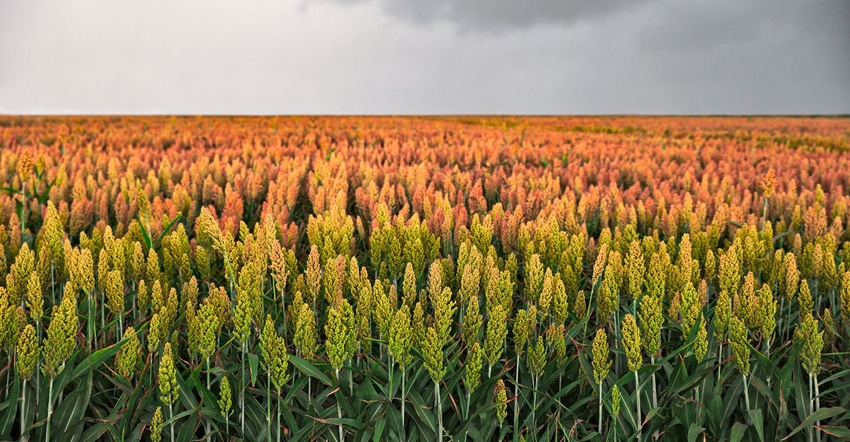April 14, 2021

According to the U.S. Grains Council, U.S. sorghum farmers have bragging rights over the quality of their crop — and foreign buyers are taking notice.
For the second year in a row, U.S. sorghum, on average, graded above the necessary requirements for U.S. No. 1, according to the 2020-21 Sorghum Quality Report, released April 6. U.S. sorghum protein content was up 8% year-over-year, at 11.2%. That is almost a full percentage point jump from last year, according to USGC.
“Protein content in sorghum is really what can set it apart from other coarse grains,” says Reece Cannady, USGC manager of global trade. “When evaluating sorghum in animal diets, it’s important to consider the value of this protein, particularly when every percentage point of protein is so precious with rapidly rising costs.”
The report is funded through the USDA Foreign Agricultural Service Agricultural Trade Promotion program, which is used by international customer and other interested parties in purchasing decisions.
A total of 108 samples were collected from 13 participating elevators in Texas, Kansas, Nebraska and South Dakota between Sept. 30, 2020, and Feb. 23. The Amarillo Grain Exchange and the Cereal Quality Lab at Texas A&M University analyzed the samples. Scientists calculated averages and standard deviations for each quality factor tested and reported results for the U.S. aggregate.
No sorghum damage in aggregate
Total sorghum damage came in at just 0.0% in the aggregate, and broken kernel and foreign material (BNFM) was only 1.6%. The results are similar to last year’s results, and they highlight how hard the grain is, and how well it holds up during handling and storage. And for the second year in a row, 100% of the samples tested undetectable for tannins.
“A common misconception is that if sorghum is red, it has tannins in it, since that is the case in other major sorghum-producing regions like Argentina, Africa and Australia,” Cannady says. “But in the U.S., we grow a nontannin red variety. Nutrient absorption can be problematic with high-tannin varieties, essentially depleting the value of the grain; so using a low-tannin, U.S.-grown seed yields great results in animal diets.” He adds that this report is one way to provide quality information about the U.S. sorghum supply, and it shows that trade partners can trust the U.S. as a supplier.
Visit grains.org 2021 Sorghum Quality Report to read the full report.
Source: The U.S. Grains Council is solely responsible for the information provided and is wholly owned by the source. Informa Business Media and all its subsidiaries are not responsible for any of the content contained in this information asset.
You May Also Like




